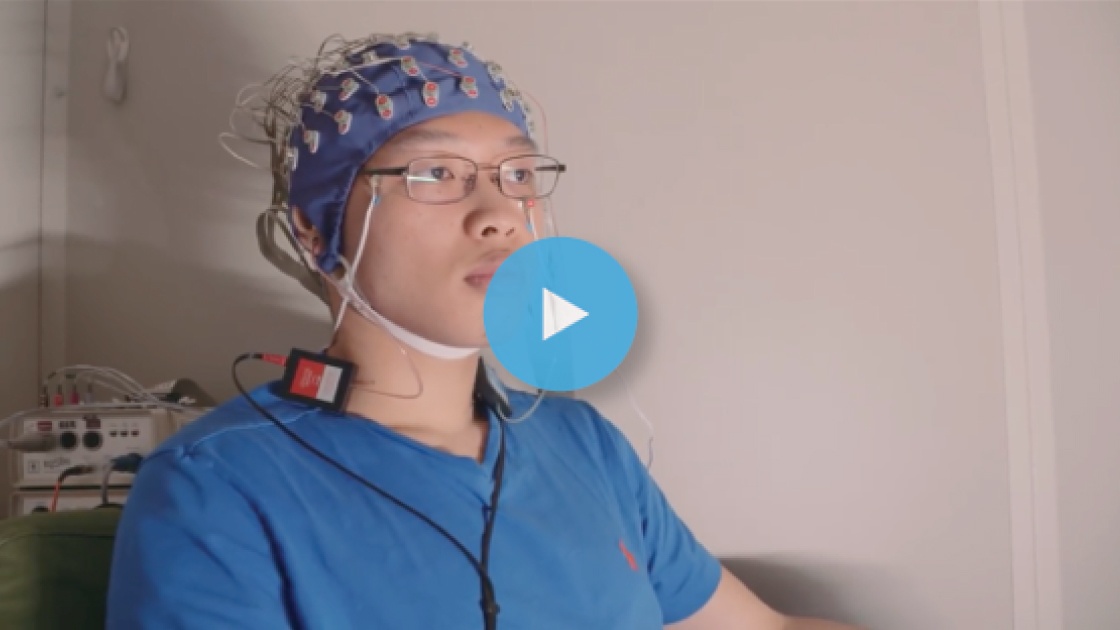What are the key factors, that we need to consider in order to ensure that learning from instructional videos 'actually sticks'.
A stronger understanding of what drives engagement, retention and application, continues to be one of the greatest challenges facing the industry today. These are the questions that have sparked the Massachusetts Institute of Technology's office of digital learning, Accenture and Skillsoft, to embark on an extensive research initiative designed to delve into the science of learning.
They want to more precisely unlock, which instructional strategies drive engagement and retention, in a video based instructional experience.
Some of the experiments for this research study include the following;
1. Assessing the impact of scenario based versus instructor-led video content on recall
2. Analysing the impact of presenting material to the learner in 'advance' of the video such as a preview or outline of the content or a pre-assessment so that the learner understands the gap in their existing knowledge
3. Reviewing the impact of interpretative testing or quizzes within the videos to see how they influence interest and retention
4. And assessing the learner’s mindset, specifically 'growth mindset' in order to understand whether people with a growth mindset 'learn better' regardless of the effectiveness of a video-based course 'or if' more interesting videos are truly the deciding factor
Following is an interview with Kana Okano who is a research scientist at the McGovern Institute for brain research at MIT, who will explain about her research which uses electroencephalography or EEG which is an electro physiological monitoring method used to record electrical activity in the brain.
So kana what are we hoping to learn from the experiment that we're conducting today
Today we're going to do a study with a bunch of videos some of them test your knowledge on IT videos some of them test your knowledge on business skills some of them just test your cognitive skills in general so we'll go through a slew of videos to test all of these things
and how might this help organizations help their employees learn about key concepts for better performance in the workplace
so what we're trying to do is see how we can improve people's retention of knowledge from these videos so employees in a workplace take a lot of these training videos on a daily basis but we don't know how much of the content they're taking away from these videos so what we want to see is by doing certain types of interventions does it help these employees retain the content more than if they were just given a simple video as their presented on a typical day
and what would your expectation be from a scenario based intervention what would you expect to be able to see on the screen in terms of brain activity?
so instead of having just a talking head in the corner of the video we're gonna have people go through kind of a scenario in a more emotionally engaging kind of way we hope to see people more engaged and more focused on the content
and with scenario-based would you expect to see for example both spheres of the brain lighting up as opposed to just maybe the left side of the brain
we should see a lot of the brain lighting up mostly I think we'll see some in the frontal and the back but I think we'll see lighting up the brain lighting up in general all over
and can you talk me through just at a very high level the exact steps and the experiment that we're going to be conducting today
sure so what we're gonna do is we're gonna have the participant come in we're gonna have him sign a consent form and make sure that he's okay and voluntarily participating in the experiment after that we'll tell him about what we're gonna be doing we're gonna have him wear a cap we're gonna put some gel into the cap and attach all the electrodes there's 64 of them and then after we set him up we're gonna have him enter the booth we're gonna hook him up to the amplifier and start recording, so here we'll be recording the EEG and we'll see the EEG coming through so we'll just make sure that everything is nice and clean Jacob is gonna be sitting next to me prompting the next experiment that Jimmy is going to be seeing inside the booth.
How long start-to-finish does an experiment like this take?
These experiments can take anywhere between an hour to two hours today we're going to be taking about an hour
In this experiment they are testing whether beginning a video-based SkillSoft IT course with a pretest increases learner engagement and retention of the material. They found in the first phase of the research that instructional strategies such as introducing an interactive outline materially improved the overall learner interest we are now validating that finding using brain scans.
Alright let's get started. hey Jimmy do you see the instructions on the screen. alright so whenever you're ready you can get started this is going to be a video on transact-sql it doesn't matter if you know anything about it but maybe you'll learn something new.
so Kona can you explain what we're looking at on the screen it looks to me like maybe each one of these waves represents an electro?
Exactly so each one of these is all the 64 channel electrodes on his cap and you can actually see you Betts's blink right there and you can actually see some of his heartbeats as well
and I'm assuming that each electrode then represents a specific region of the brain?
so you can actually see the montage here this shows you all the 64 electrodes that are placed on his head the frontal channels like a1 b1 b2 those are the ones that signify some engagement signals so ones above here.
in this next experiment they are testing whether putting a learner in a growth mindset prior to taking a SkillSoft video based course can increase learner engagement and retention of the material. In the first phase of the research they found that the presence of growth mindset directly correlates to the expressed level of interest in the video and improve performance on the final assessment.
so kona the next experiment we're going to be running is when the subject looks at a growth mindset video what are we hoping to accomplish
right so there's some studies that suggest that when people are taught about growth mindset they're going to change their behavior so that they're more prone to have that mindset so that's what we're hoping to do with the next video
why is it important for us to understand a learner's mindset
mindset as we know is on a spectrum so they might not be completely fixed mindset they might not be completely growth mindset but they're somewhere on that spectrum and by measuring where they are on that spectrum we're able to assess how well they'll be able to retain information or learn from something better than someone else who has a fixed mindset
so this one you're just going to watch a video about your mindset it's going to last about five minutes okay. all right so just stare at the screen and enjoy the video
in previous research they found that the instructor LED video instructional strategy proved to be the least interesting approach simply delivering a lecture on camera interspersed with bulleted concepts is the least engaging way to present critical business skills content.
Instructional strategies such as presenting the content within an impactful scenario based format, materially improve the overall learner interest.
The findings suggest that learners crave a storyline, a narrative, and some degree of self-directed progressive disclosure of the concepts. In this experiment they are validating that initial finding using EEG technology. They are testing whether a SkillSoft business skills video based course designed using scenario as the primary instructional strategy is more interesting and therefore more engaging than a course using instructor talking to camera as the instructional strategy. The expectation from previous research is that learners will find scenario based content to be more interesting and therefore they will be more likely to proactively engage with the material and consequently remember what they have learned
So Kona the next experiment we're looking at a scenario based business video what are we hoping to learn from this particular experiment
So this one we have a scenario-based version and a baseline version which is basically just a talking head so we're hoping to see more engagement and more attention and focus in the scenario-based version rather than the baseline versions which is just a talking head
This last part of the research demonstrates just how rigorous the research process is. All research participants are given an IQ test to make sure that we control for differences in individuals IQs and that findings are not influenced by differences in IQ among test subjects.
Now that we have seen this incredible research in action we hope that you're as excited as we are about learning from the results of this state-of-the-art investigation into how adults effectively learn from video-based content.
Now more than ever it's critical for us to understand how to make video-based training as effective as it can possibly be. The findings will inform design considerations for instructional content for the modern enterprise.
We will share updates on this research over the coming months.




